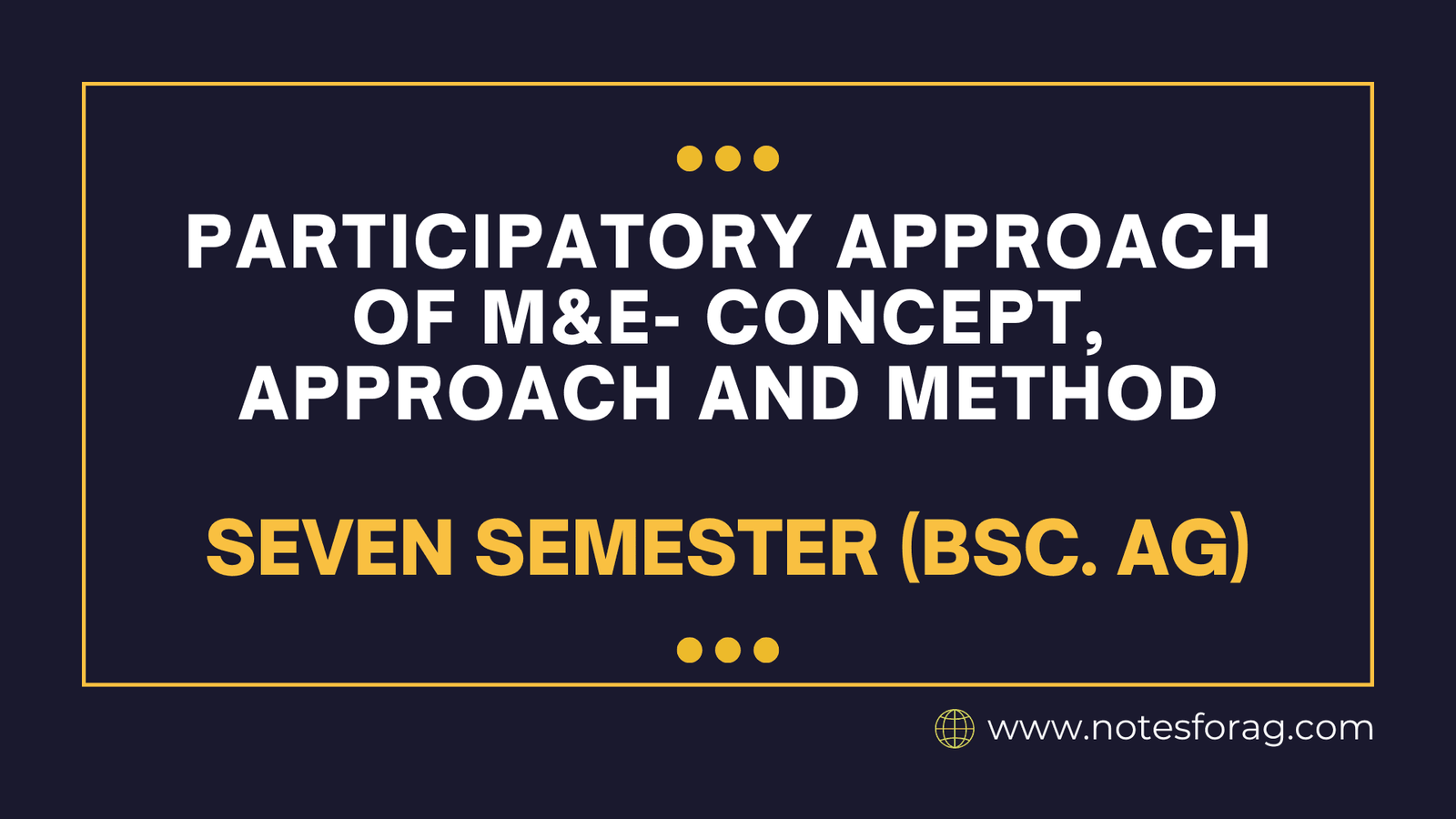The Participatory Approach to Monitoring and Evaluation (M&E) involves engaging project stakeholders, particularly the beneficiaries, in the entire process of designing, implementing, and assessing a project. This approach contrasts with traditional M&E, where external experts usually handle evaluation. Here, local communities and stakeholders take an active role in evaluating the project’s progress and impact. This ensures that the project is aligned with the real needs of the community, making it more transparent and accountable.
Table of Contents
Concept of Participatory Monitoring and Evaluation
Participatory Monitoring and Evaluation is centered on inclusivity and shared ownership. It emphasizes collaboration between the project team and the beneficiaries during assessment. By incorporating local knowledge, the evaluation becomes more relevant to the specific context, as opposed to relying solely on external evaluators who may overlook local nuances.
Unlike conventional M&E, participatory M&E transforms community members from passive recipients to active participants, offering them a voice in shaping the project’s future. The key features of participatory M&E include:
Involving diverse stakeholders
Beneficiaries, project implementers, government officials, and NGOs contribute to the process.
Incorporating local expertise
Community insights lead to more accurate evaluations.
Transparency
Information is openly shared with all stakeholders.
Building capacity
Local stakeholders gain skills and experience through their involvement in M&E activities.
Approach of Participatory M&E
Engaging Stakeholders: The first step is identifying and involving all relevant stakeholders, especially the community. Their involvement from the start ensures that the M&E framework is tailored to their needs and priorities.
Defining Objectives and Indicators: Instead of external consultants setting the objectives, community members and beneficiaries collaborate to identify the most important indicators of success. For example, if a project aims to improve local livelihoods, the community may prioritize access to resources like water or food security over other factors.
Data Collection by the Community: In participatory M&E, beneficiaries are often trained to collect and analyze data themselves. This allows them to gather more culturally appropriate information, which external evaluators might miss. Data collection methods include interviews, surveys, and observations.
Joint Analysis: After data collection, stakeholders analyze the information together, ensuring that all perspectives are considered. This collaborative analysis helps generate deeper insights and ensures that the findings are relevant to all participants.
Continuous Feedback and Learning: Participatory M&E encourages real-time feedback, allowing the project team to make necessary adjustments during the project’s implementation. This feedback loop ensures the project remains responsive to evolving community needs.
Empowerment Through Capacity Building: Throughout the M&E process, community members gain valuable skills in data collection and decision-making. This empowers them to take on leadership roles in future projects.
Methods of Participatory Monitoring and Evaluation
Several tools and methods are commonly used in participatory M&E:
Focus Group Discussions (FGDs): These group discussions bring together community members to share their opinions and experiences related to the project, helping gather rich qualitative data.
Participatory Rural Appraisal (PRA): PRA includes various techniques like mapping, transect walks, and problem ranking, enabling rural communities to assess their own needs and priorities.
Community Scorecards: Beneficiaries rate the performance of the project through scorecards, helping track improvements over time and ensuring accountability.
Participatory Impact Assessment (PIA): In PIA, community members help define the key impacts of the project and how they should be measured.
Storytelling: Personal stories shared by beneficiaries provide qualitative insights into how the project has impacted their lives.
Self-Evaluation: Communities and project teams conduct evaluations themselves, increasing ownership of the results and fostering a sense of accountability.
Benefits of Participatory Monitoring and Evaluation
Greater Relevance and Accuracy: Since the community is directly involved, the results are more likely to reflect the true impact of the project and address local needs.
Enhanced Accountability: The participatory approach ensures project implementers are accountable to the beneficiaries, leading to more responsible project management.
Community Empowerment: By engaging in M&E, the community gains valuable skills and experience, allowing them to take greater control over future projects.
Context-Sensitive Adaptation: Communities often have a better understanding of their environment, making participatory M&E more adaptable and responsive to local conditions.
Building Trust: Involving beneficiaries in M&E builds stronger trust between project teams and communities, leading to more effective collaboration and better project outcomes.
Challenges of Participatory M&E
Time-Intensive: The process of involving communities and stakeholders in M&E can take longer than traditional approaches, requiring more time for coordination and discussion.
Skill Gaps: Communities may need training in data collection and analysis, which can increase the project’s costs and timelines.
Potential for Bias: Because local stakeholders are involved in collecting and analyzing data, there can be some bias in how results are interpreted. Proper guidance and training can help mitigate this risk.
Sustainability Concerns: Ensuring that participatory M&E continues after external support ends can be a challenge, as communities may lack the resources to maintain the system.
Conclusion
The participatory approach to Monitoring and Evaluation offers a valuable way to ensure that projects meet the actual needs of the communities they aim to serve. By involving beneficiaries throughout the evaluation process, this method promotes ownership, transparency, and sustainability. While it requires more time and resources compared to traditional M&E, the benefits in terms of community empowerment, trust-building, and project relevance are significant.
Frequently Asked Questions (FAQ)
What is the Participatory Approach to M&E?
The participatory approach to Monitoring and Evaluation involves engaging project beneficiaries and stakeholders directly in the planning, data collection, analysis, and evaluation of a project. This method contrasts with traditional M&E, where external evaluators usually handle the entire process. The participatory approach ensures that community members play an active role in assessing the project’s progress and outcomes.
Why is the participatory approach important in M&E?
The participatory approach is essential because it promotes inclusivity and ownership of the project by the community. By involving local stakeholders in the evaluation, the process becomes more grounded in the community’s needs, leading to more accurate and meaningful results. It also fosters transparency and accountability and empowers communities by building their capacity to contribute to future projects.
Related Articles

